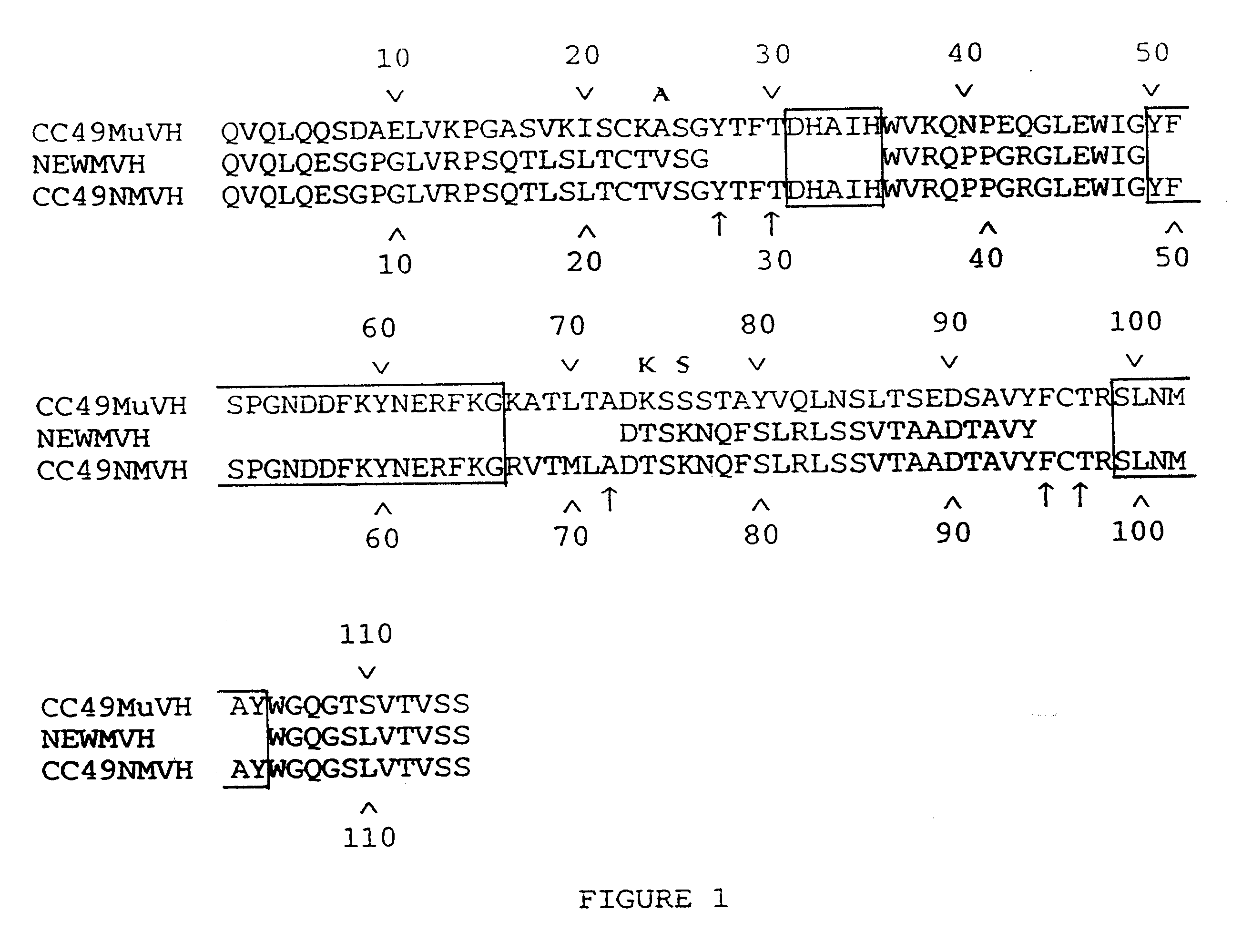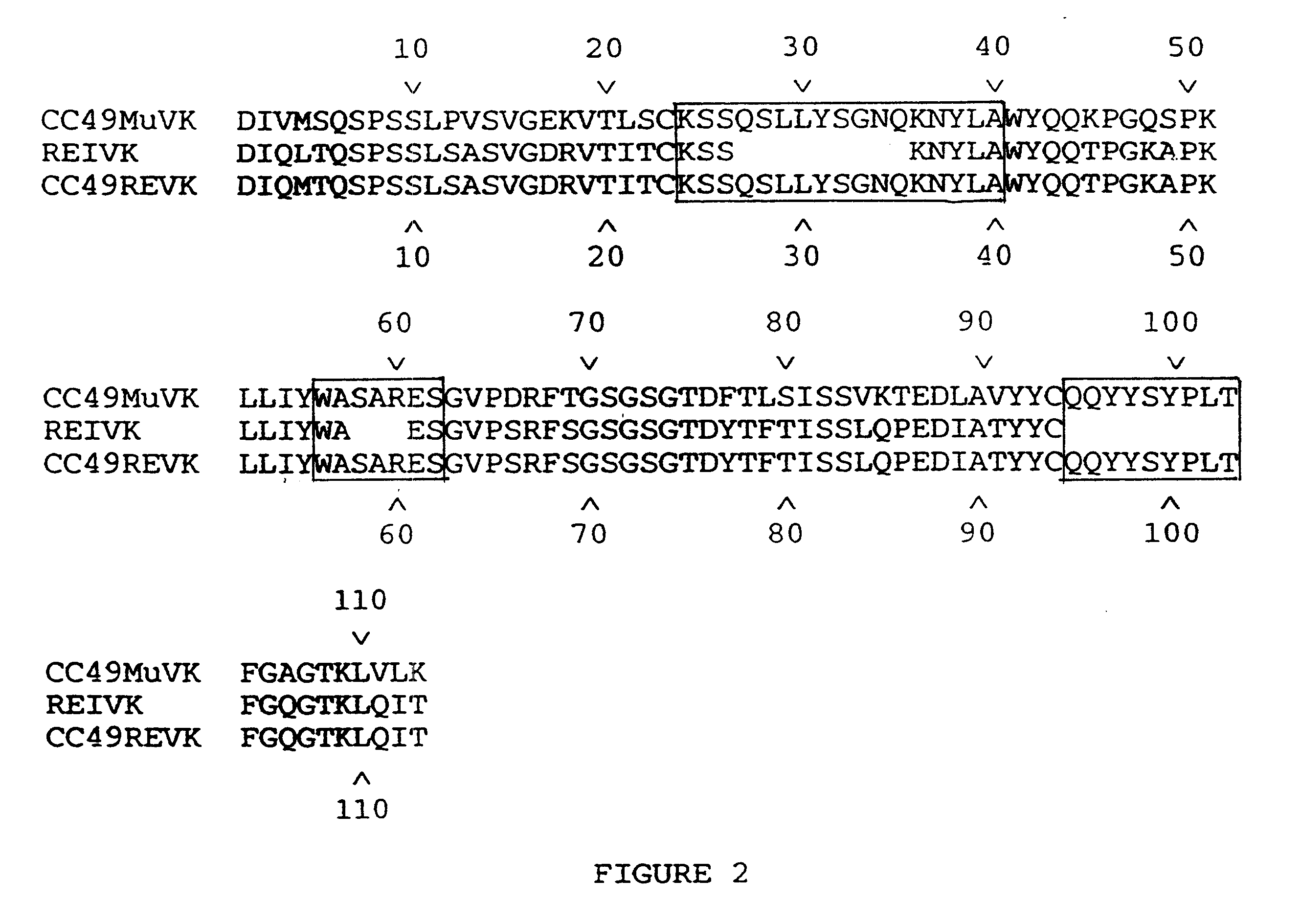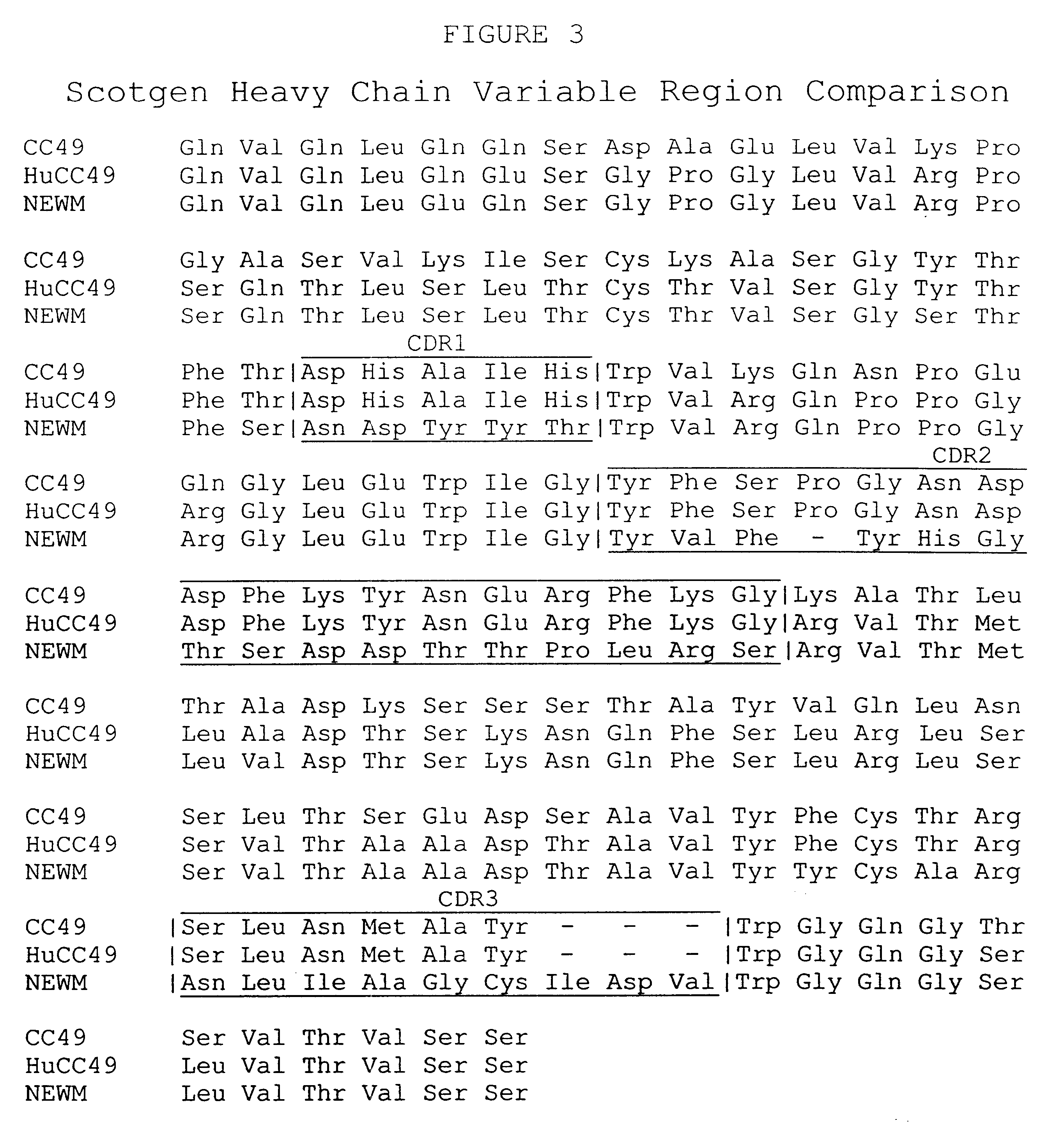High affinity humanized anti-TAG-72 monoclonalantibodies
a humanized anti-tag 72 and monoclonal antibody technology, applied in the field of high affinity humanized anti-tag 72 monoclonal antibodies, can solve the problems of eliciting anti-idiotypic responses, neutralizing antibody responses, and disadvantages in some respects
- Summary
- Abstract
- Description
- Claims
- Application Information
AI Technical Summary
Benefits of technology
Problems solved by technology
Method used
Image
Examples
example 1
Preparation of CDR-grafted (initial humanized) Antibody from Murine CC49
We describe in this Example the construction of humanized CC49 Mabs (CC49 HuVH / HuVK) using the V.sub.L and V.sub.H frameworks of human Mabs REI and NEWM, respectively. The CDRs for murine CC49 were grafted onto human frameworks according to known methods as discussed supra. In particular, human frameworks were selected from antibodies which, based on previous studies, were predicted to be suitable, i.e. which should not adversely affect antigen binding and not exhibit significant immunogenicity in humans. The human frameworks selected for the variable heavy and variable light chains, respectively, were NEWM and REI. In the production of the initial version of the humanized VH, certain murine framework residues were also retained which, based on previous studies, might allow retention of antigen binding properties. Specifically, residues Y27, T30, A72, F95, and T97 of the murine heavy chain were initially retaine...
example 2
Measurement of Affinity Constant for the Humanized CC49 Antibody Obtained in Example 1
The affinity constant of the final humanized CC49 antibody, CC49 HuVH / HuVK, of Example 1 (having variable heavy and variable light chain sequences shown in FIGS. 3 and 4, respectively) were measured according to the ELISA assay protocol set forth above. The ATCC (Budapest) HB 9884 chimeric CC49 antibody was used as an internal control. This ELISA assay was performed repeatedly using purified samples of humanized and chimeric CC49 monoclonal antibodies in order to substantiate the accuracy of the values obtained and to account for inherent assay-to-assay variability. Typical results from such an analysis are shown in FIG. 12. A summary of the results obtained during these analyses is shown in Table 1.
These results demonstrate that the humanized anti-TAG-72 antibody HuVH / HuVK (having the variable heavy and variable light sequences shown in FIGS. 3 and 4, respectively) has a binding affinity approxima...
PUM
| Property | Measurement | Unit |
|---|---|---|
| Fraction | aaaaa | aaaaa |
| Therapeutic | aaaaa | aaaaa |
Abstract
Description
Claims
Application Information
 Login to View More
Login to View More - R&D
- Intellectual Property
- Life Sciences
- Materials
- Tech Scout
- Unparalleled Data Quality
- Higher Quality Content
- 60% Fewer Hallucinations
Browse by: Latest US Patents, China's latest patents, Technical Efficacy Thesaurus, Application Domain, Technology Topic, Popular Technical Reports.
© 2025 PatSnap. All rights reserved.Legal|Privacy policy|Modern Slavery Act Transparency Statement|Sitemap|About US| Contact US: help@patsnap.com



